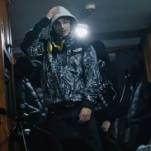The detours help. Midway through his investigation of Roger Fenton’s pioneering war photography—his classic shots, known as the “Valley Of The Shadow Of Death” pictures, of a deserted road near a battlefield on the Crimean Peninsula in 1855—Morris pauses to consider the last night of the Cuban Missile Crisis. (Which came about because of the U.S. missiles trained on the Soviets from across the Black Sea, in Turkey. Everything connects.) Khrushchev, Morris recounts, spent a sleepless night full of dread. Kennedy, meanwhile, cavorted around the White House pool with an aide and two girlfriends, watching Audrey Hepburn flee her obligations as an heiress in Roman Holiday. “What a story,” Morris writes. “It was a fantasy within a fantasy within the reality of the White House.”
Photographs, Morris argues, can draw at least as much from fantasy as reality. As much as we’ve grown accustomed to the idea that photography tells the truth, it sometimes simply reinforces preconceived notions. Who was the real “hooded man” in the Abu Ghraib photos? If a photographer documenting a brutal Depression-era drought moved an iconic cow skull a few feet to compose a better picture, does that constitute a criminal breach of ethics? Why are there so many shots of dolls in the rubble in war-torn areas? Morris deep-dives into these and other issues surrounding what we think we know to be true about photography.
Morris’ own father, he reveals in a brief, telling preface, died before Morris was 3. Family photographs “both gave me my father and took him away,” he writes. “Photographs put his image in front of me, but they also acutely reminded me of his absence.” In that sense, he goes on to suggest, all photos are a representation of what is missing as much as what is apparent.
As a young boy, Morris underwent an operation to correct a misaligned eye. His refusal to wear the patch that would help train his gaze left him permanently impaired. “Why do I see things the way I do?” he asks. “I suppose it must have something to do with my skepticism about vision.” In Believing Is Seeing, he makes a laser-like case that we should all have another look.









































